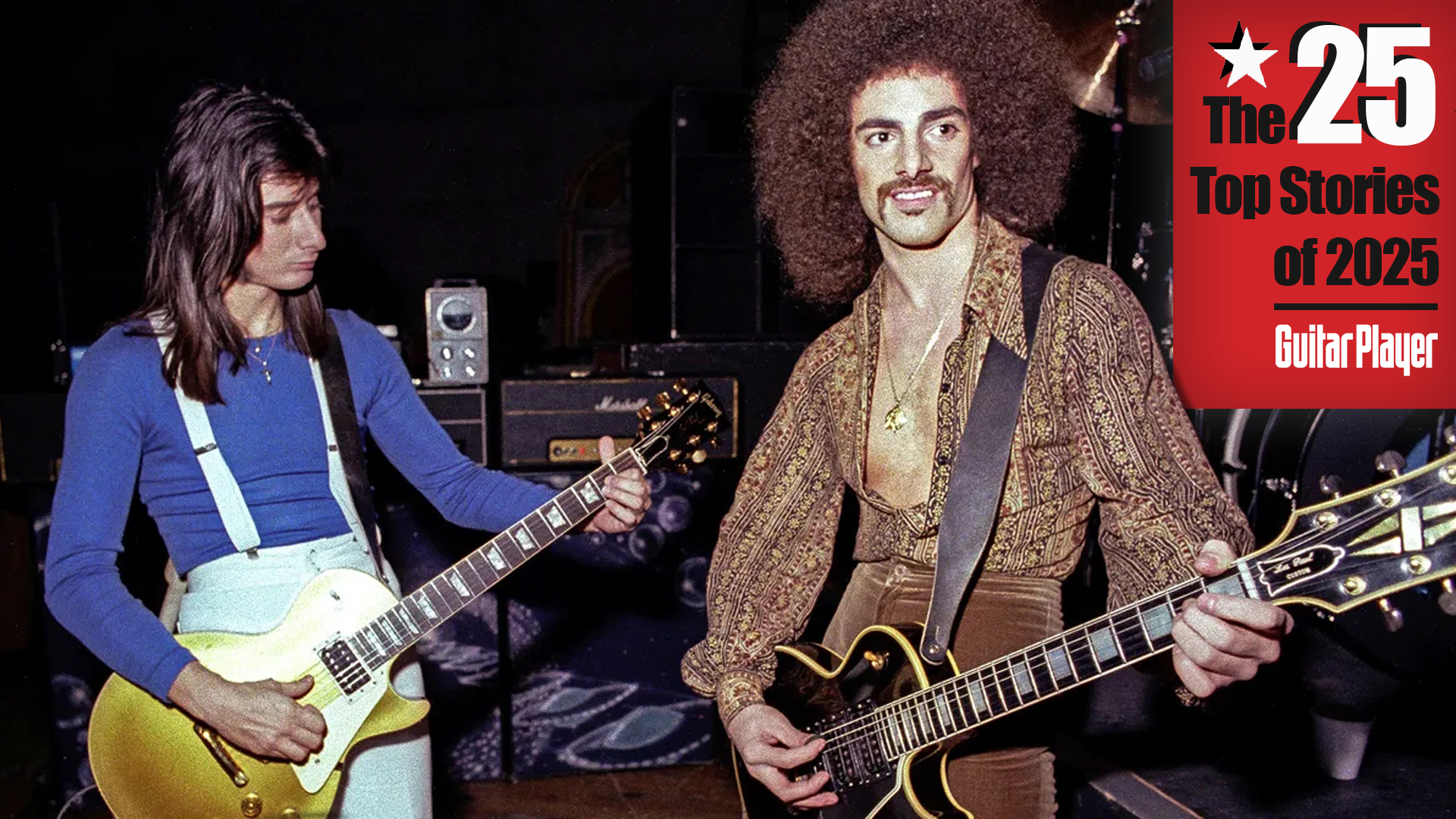“Sometimes, in order to get the job done, you have to do it yourself”: Jethro Tull's Ian Anderson recalls the song that led him to play a Les Paul for the first, and only, time
Anderson says he borrowed Martin Barre’s guitar for a one-man recording session that saved a now-classic song from the cutting room floor

When the name Ian Anderson is mentioned, most people would imagine the British prog luminary with a flute to his mouth and one leg aloft, or with an acoustic guitar in hand. But there was one time – and one time only – that a Les Paul came to his aid on a track he built up from scratch after live studio takes weren't cutting it.
Talking in the new issue of Guitar Player, which sees David Gilmour grace the cover, Jethro Tull’s maestro detailed the making of their now staple track, Locomotive Breath.
When recording the band’s seminal Aqualung record in 1971, the group tried capturing the song’s basic tracks live, just as always. Anderson, though, wasn’t convinced. He said the groove “didn’t have the metronomic feel I wanted. It was just too loose and untidy.”
Not one to give up on songs, he created a DIY click track by banging two drumsticks together – an act a far cry away from today’s digital recording processes – and followed that by laying down the kick drum and hi-hat.
Eager to encapsulate the band’s signature heavy edge, a powerful chalk and cheese contrast with their folk tinges, he borrowed bandmate Martin Barre’s Gibson Les Paul.
As GP scribe Joe Bosso writes, the rhythm parts he laid down darted in and around vocals and, as Anderson confessed to him, “This was the only time I ever played a Les Paul.”
“Sometimes, in order to get the job done, you have to do it yourself,” he continues, adding that Barre wound up playing parts that he “simply couldn’t play,” while acknowledging the bruises his one-man recording methods might have made to his bandmates' egos.
All the latest guitar news, interviews, lessons, reviews, deals and more, direct to your inbox!
Drummer Clive Bunker then cut the remaining drum parts, with John Evan handling piano duties and bass player Jeffery Hammond contributing what Anderson describes as “varooming” basslines.
The idea for a jazz-blues piano intro, the rock legend adds, came later.
“I wanted something that would set a mood of quiet grandeur before it was shattered,” he says. “John did some improvisation that became more definitive, and Martin added the intro guitar solo and various bits.”
Aqualung was released the same year as three other prog rock classics – Yes' Fragile, Genesis’ Nursery Cryme, and Emerson, Lake and Palmer’s head-spinning Tarkus. Of it's tracking, Martin Barre said it “came at a time when we’d turned the corner on the naïveté of learning to become musicians, and more was then expected of us. We needed to progress.”
He echoes Anderson's statement that the song was “hard to get down,” but says he “played all the guitar parts, but Ian added a few phrases to complement the vocal line during the mix when I wasn’t present,” which is a little out of sync with Anderson's account.

“It was important to get a driving relentless feel to the track,” he extends. “We were a live band, and we just wanted to get the record finished so that we could get out and play the songs in front of an audience”
Adding more context to the track's story, Anderson previously told GP he “wanted a song about a runaway train, where things are going out of control and you can’t get off the train.
“It’s safe to say that kind of situation mirrored an aspect of the band’s life at the time, what with all the touring we were doing. We just couldn’t get the feeling, and I was failing to convey to the band what the song was about and how it should work.
“Nobody actually played on that track at the same time, but it’s not a bad performance whatsoever. That was the only time we ever did anything like that back then.”
Head to Magazines Direct to pick up a copy of the new issue of Guitar Player. It also includes conversations with David Gilmour, Adrian Belew and Steve Vai, and takes a closer look at Jason Isbell’s “Red Eye” Les Paul.
A freelance writer with a penchant for music that gets weird, Phil is a regular contributor to Prog, Guitar World, and Total Guitar magazines and is especially keen on shining a light on unknown artists. Outside of the journalism realm, you can find him writing angular riffs in progressive metal band, Prognosis, in which he slings an 8-string Strandberg Boden Original, churning that low string through a variety of tunings. He's also a published author and is currently penning his debut novel which chucks fantasy, mythology and humanity into a great big melting pot.
- Joe BossoContributing Writer


